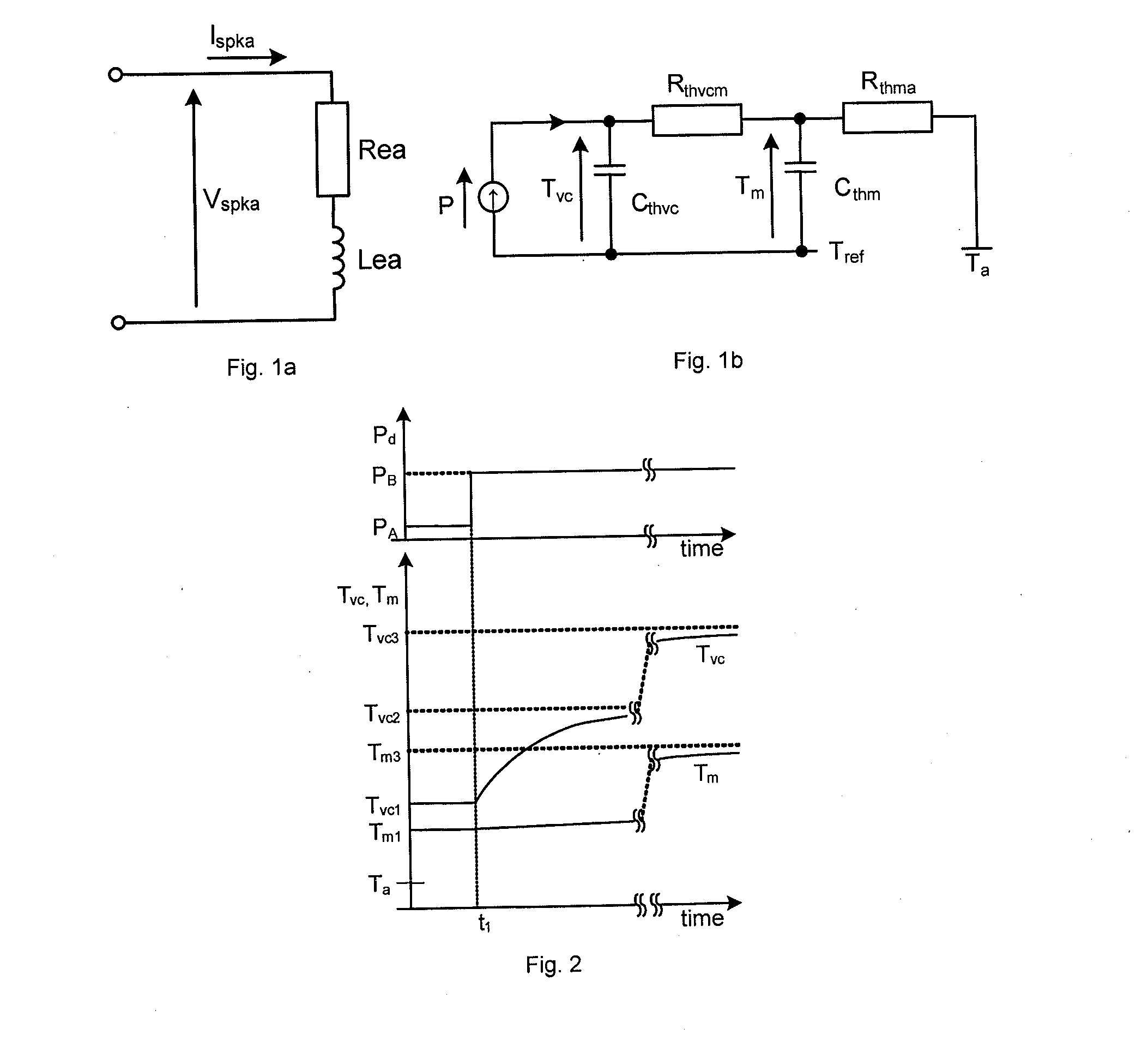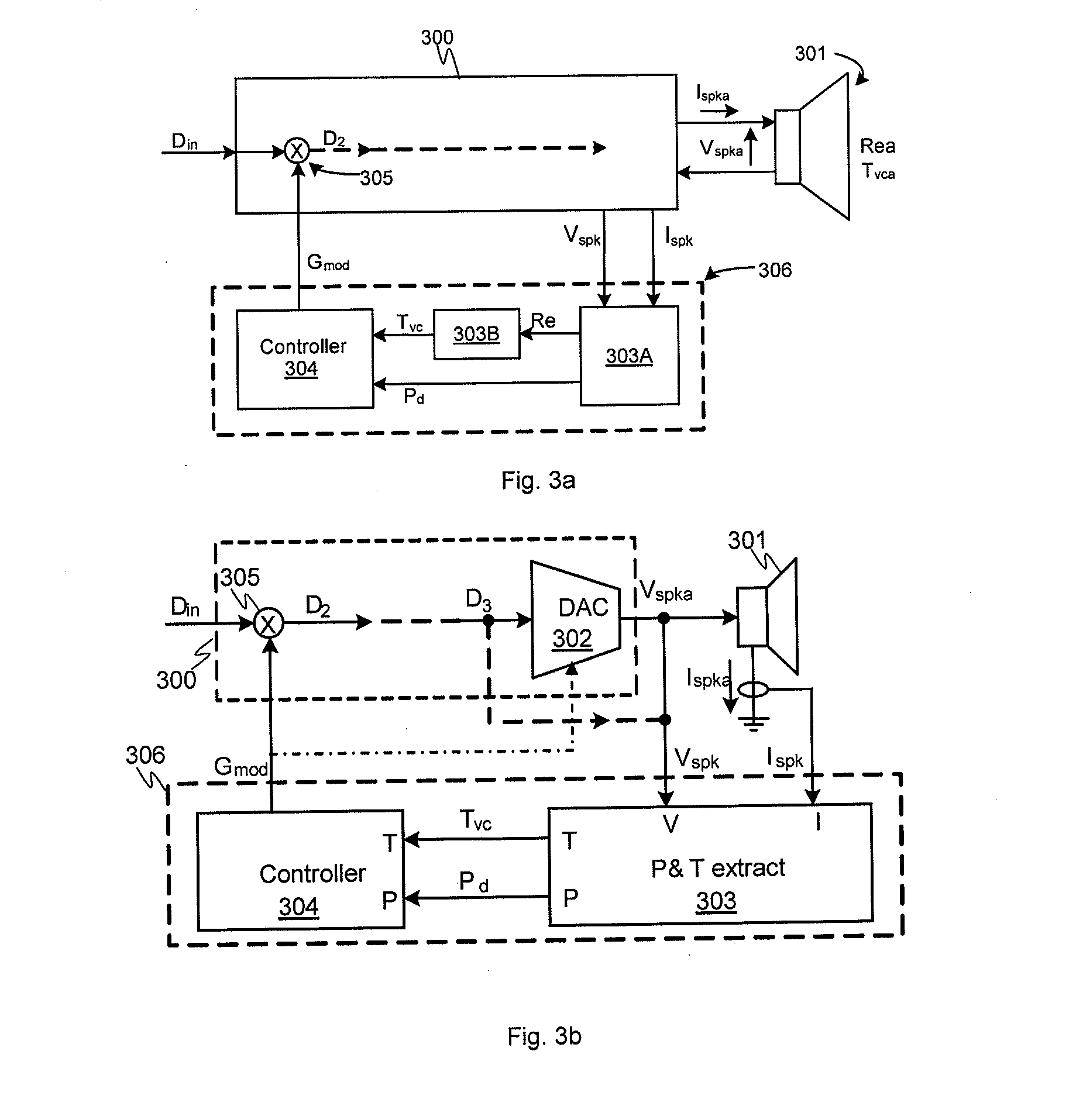Loudspeaker protection systems and methods
a loudspeaker and protection system technology, applied in the direction of transducer details, electrical transducers, signal processing, etc., can solve the problems of thermal overload of the loudspeaker, audio drive circuitry overloading the loudspeaker, and not always economical,
- Summary
- Abstract
- Description
- Claims
- Application Information
AI Technical Summary
Benefits of technology
Problems solved by technology
Method used
Image
Examples
Embodiment Construction
[0061]As mentioned above FIG. 1b illustrates a thermal model of a typical loudspeaker which explains how the output power from the audio driving circuitry can lead to an increase in the temperature of the voice coil. It will be understood that the various thermal time constants for the components of the model, i.e. the components of the loudspeaker may be quite different.
[0062]Audio signals are conventionally in the range of about 20 Hz-20 kHz with corresponding time constants of the order of 10 ms to 10 μs. The output audio power is usually determined over a plurality of cycles of the instantaneous audio signal but still within a period typically less than about 100 ms or so. It will be appreciated that for an audio track the amplitude of the input signal, i.e. the relative loudness of the intended sound signal, may vary throughout the track. For instance an audio track may have relatively louder and relatively quieter periods and may transition from quiet to loud, or vice versa, r...
PUM
 Login to View More
Login to View More Abstract
Description
Claims
Application Information
 Login to View More
Login to View More - R&D
- Intellectual Property
- Life Sciences
- Materials
- Tech Scout
- Unparalleled Data Quality
- Higher Quality Content
- 60% Fewer Hallucinations
Browse by: Latest US Patents, China's latest patents, Technical Efficacy Thesaurus, Application Domain, Technology Topic, Popular Technical Reports.
© 2025 PatSnap. All rights reserved.Legal|Privacy policy|Modern Slavery Act Transparency Statement|Sitemap|About US| Contact US: help@patsnap.com



